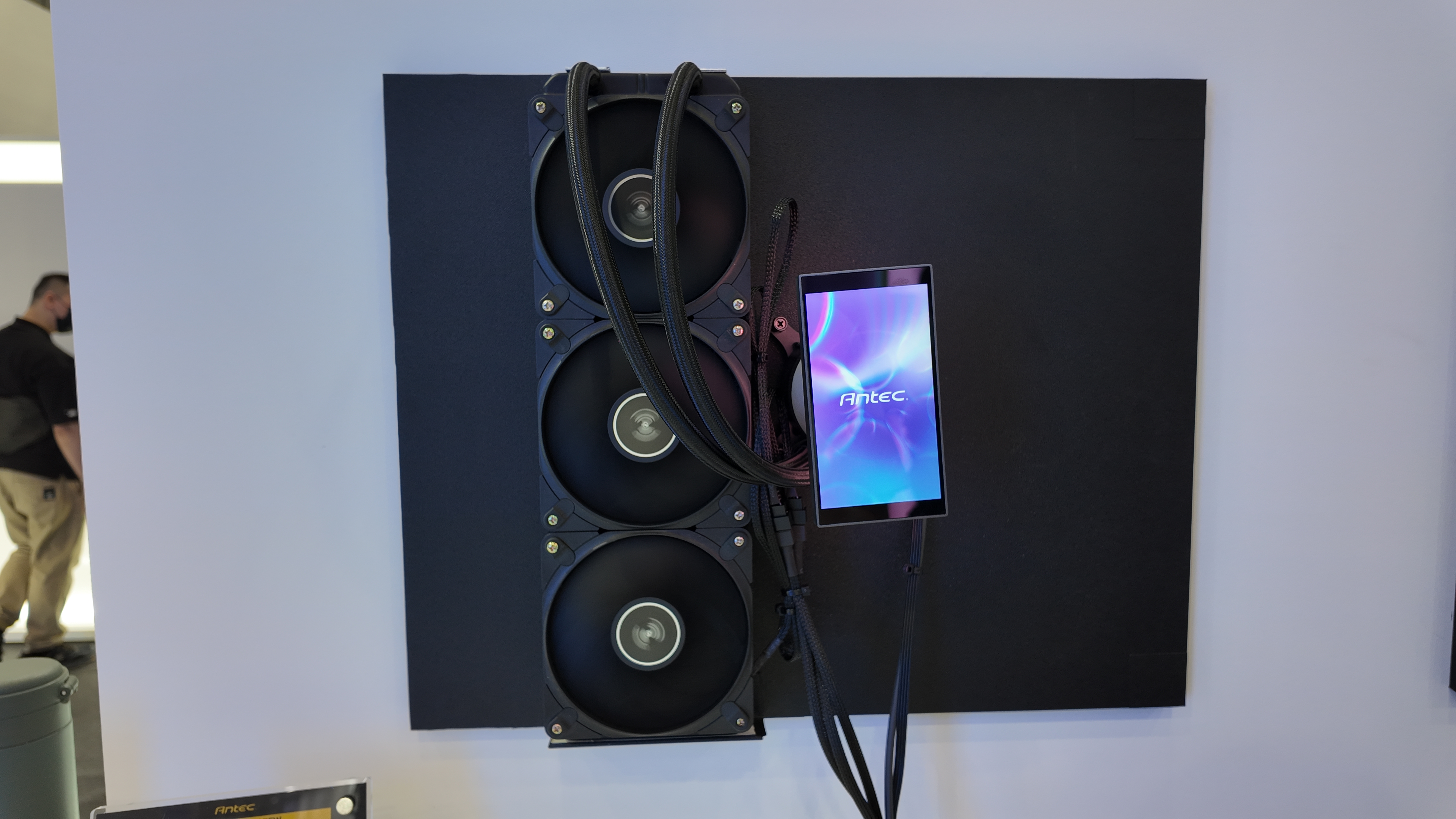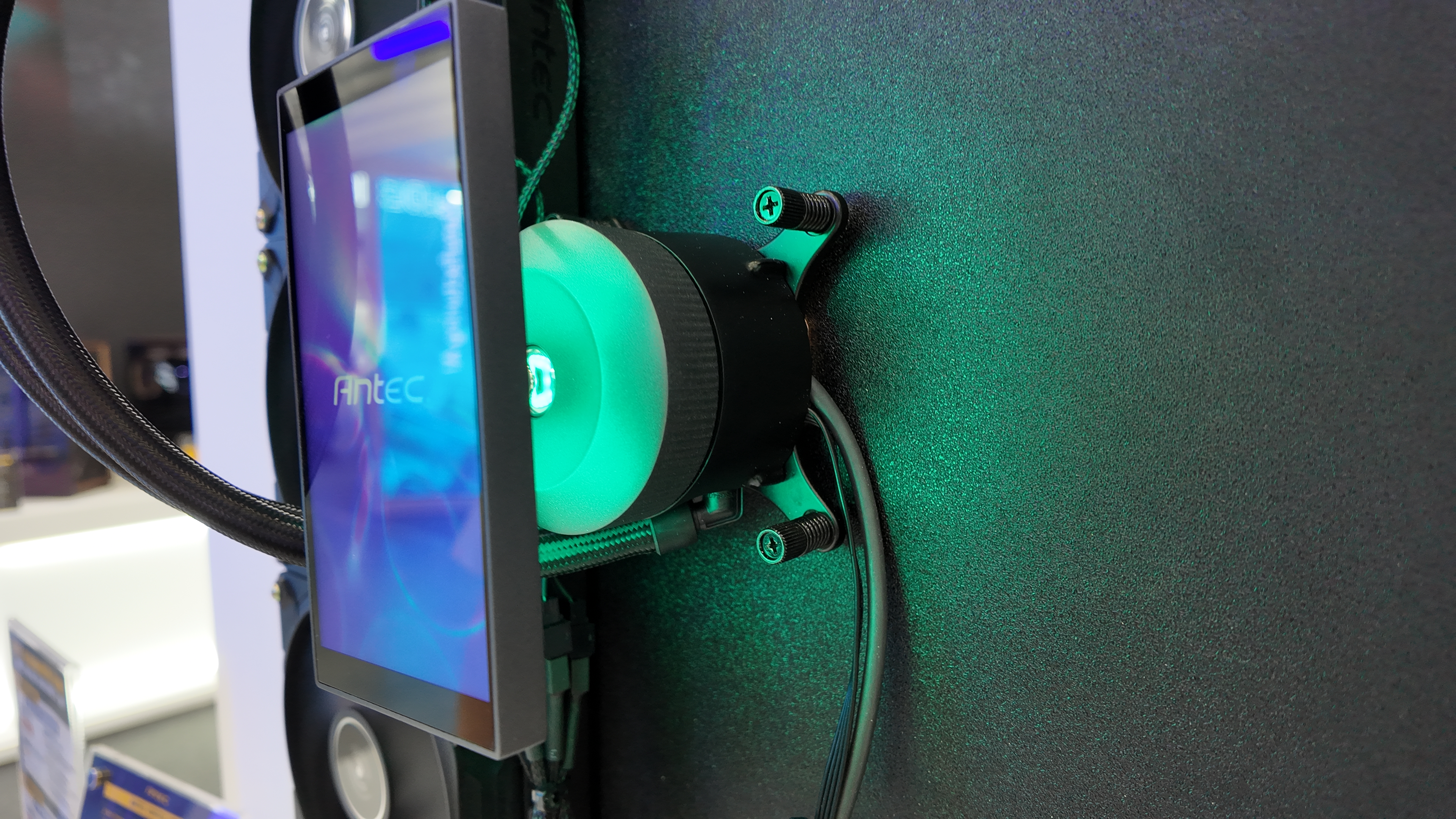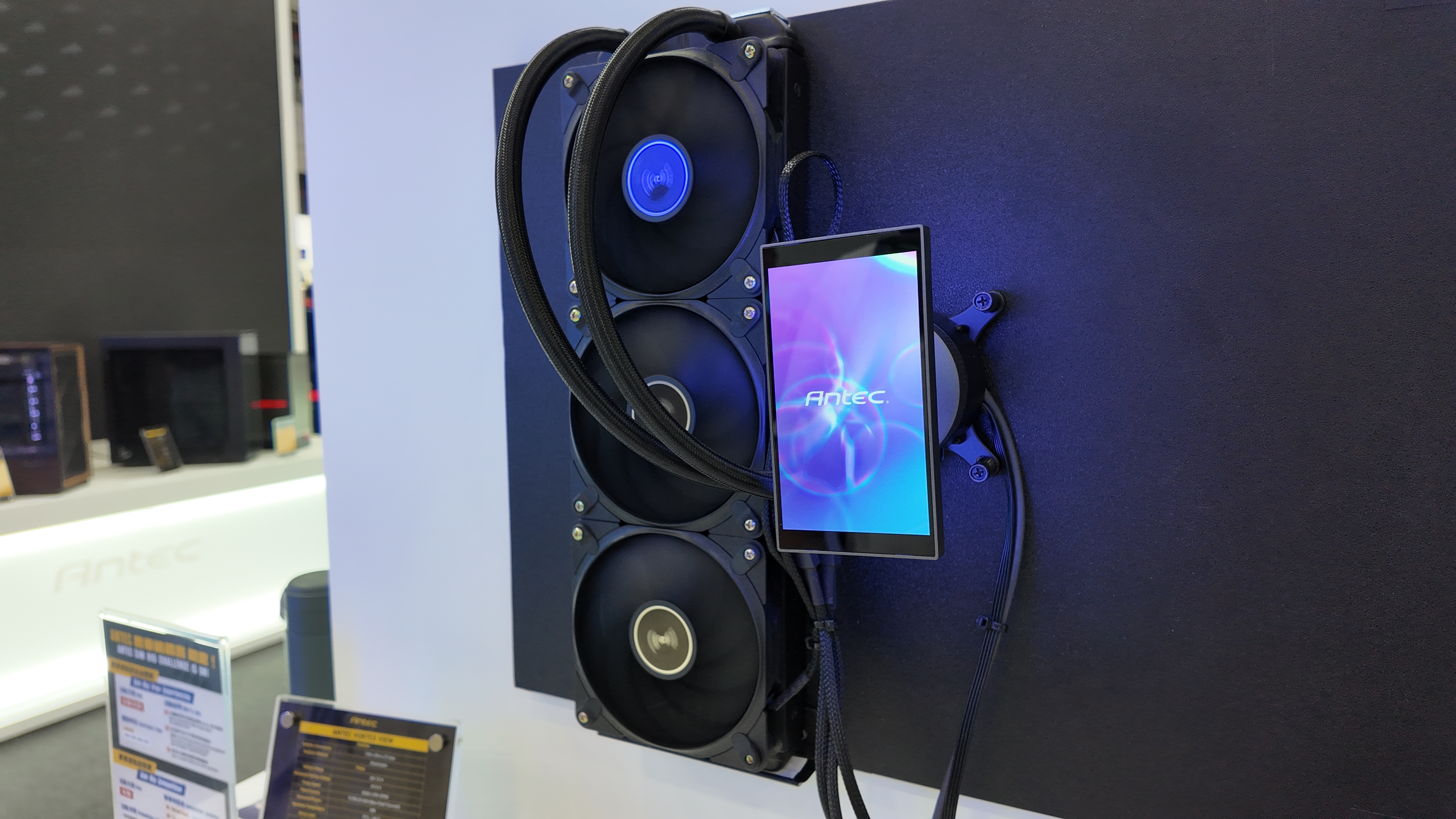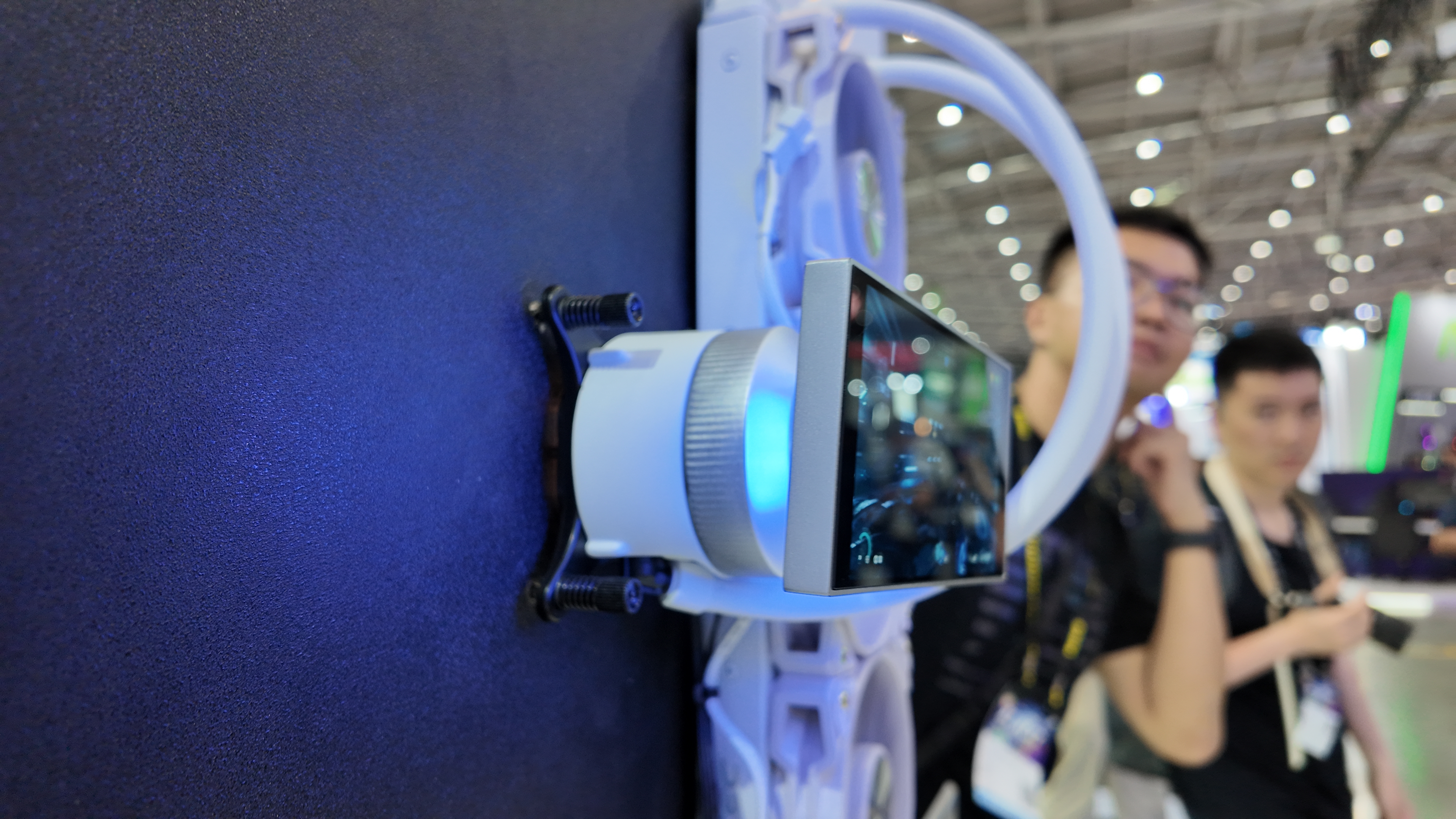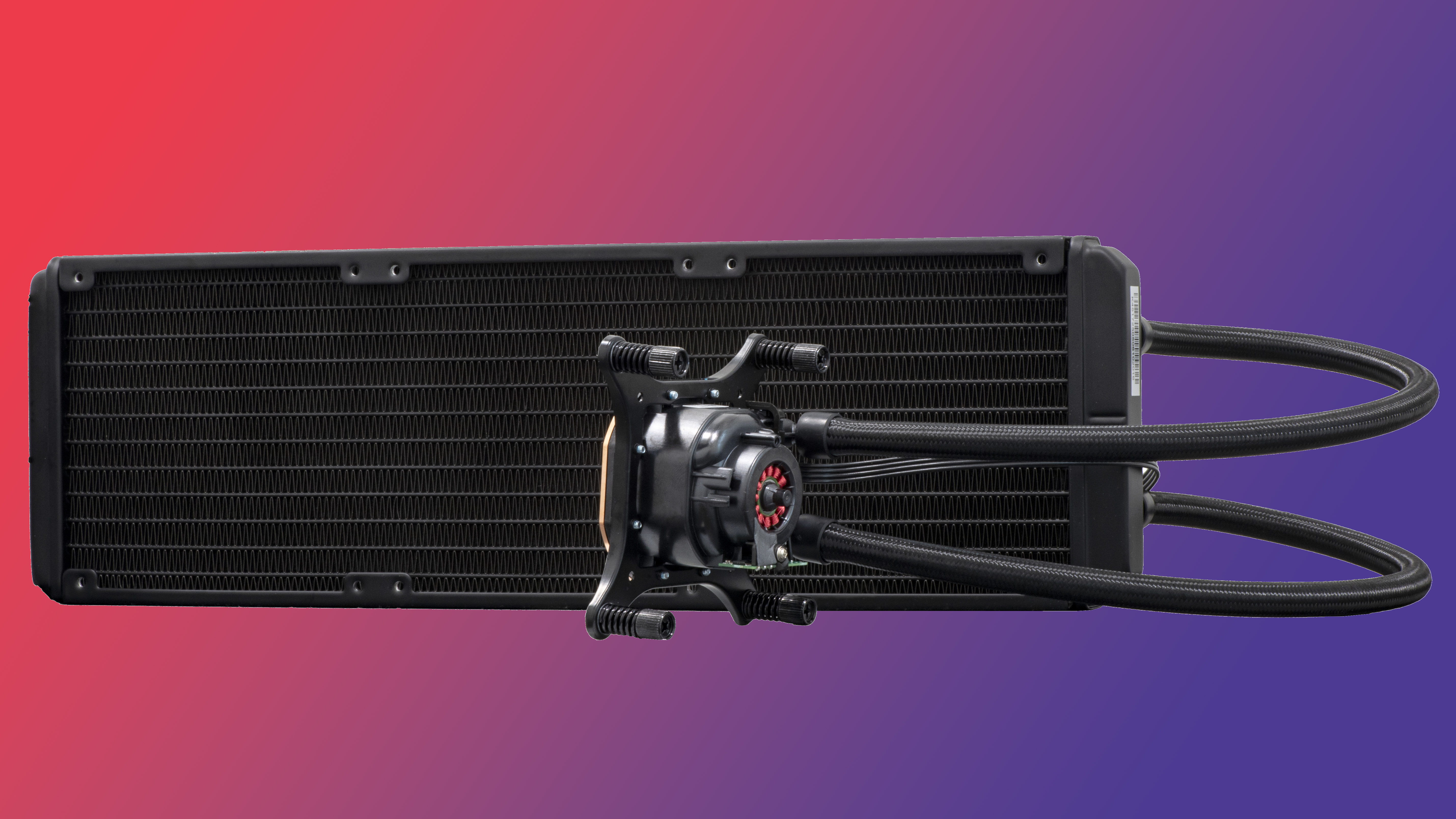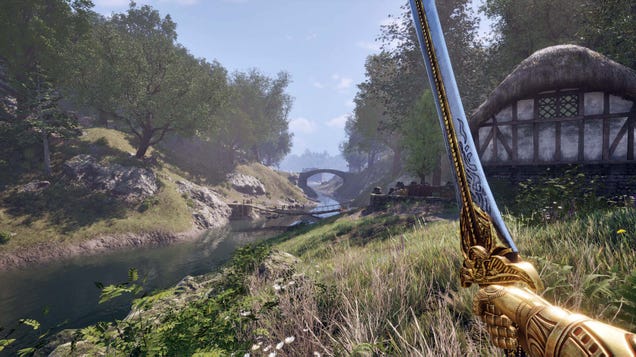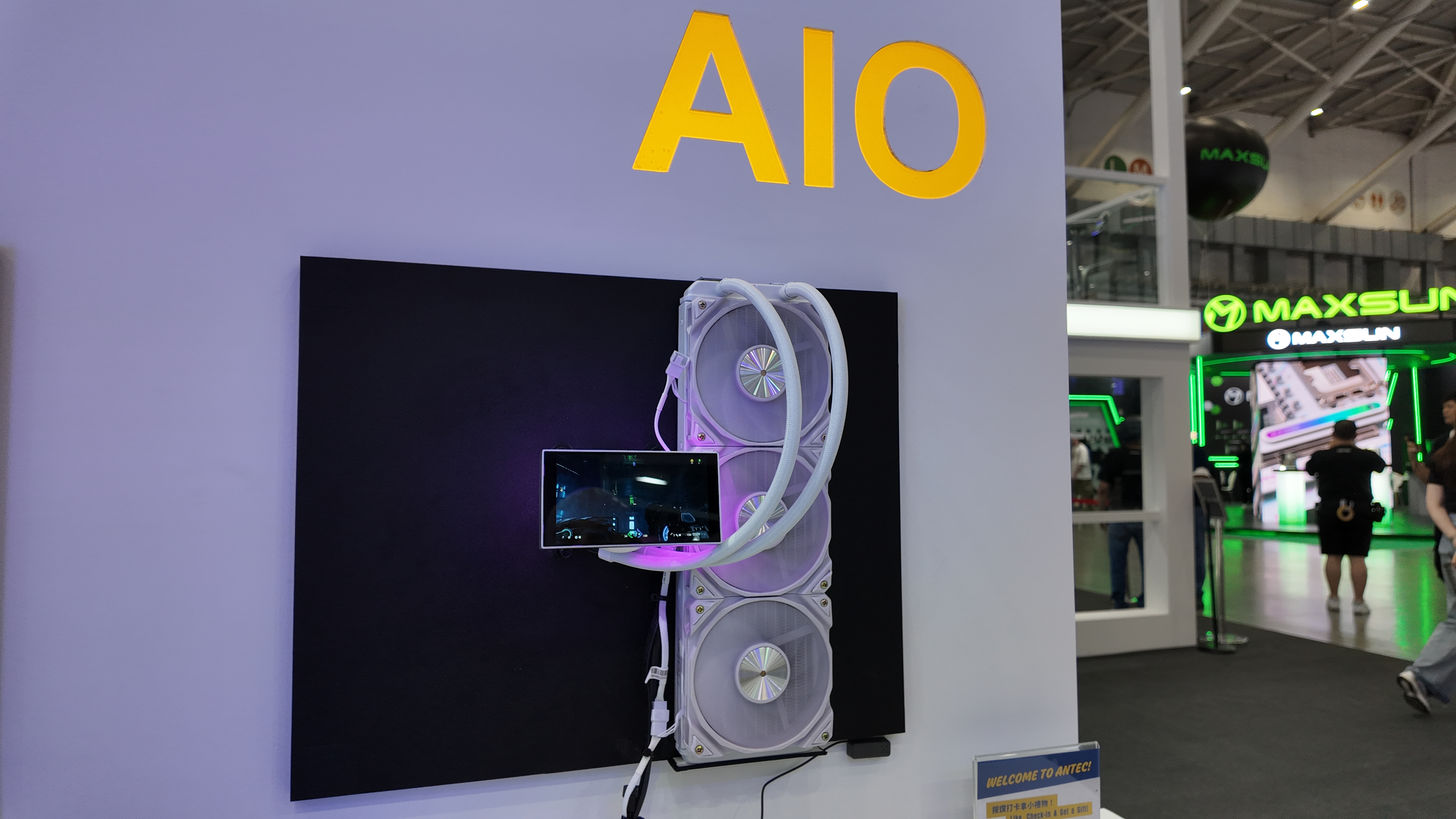
And it's still good for CPUs up to 400 W, apparently.
We’ve come a long way with liquid coolers. The first generation was known for being loud and at risk of causing a puddle in your PC. While the latter is a slightly unfair reading of the upcoming tech at the time—a leak was uncommon and my ancient Corsair H100i is still going strong—the first part isn’t. Older liquid coolers make a lot of noise, and a big part of that was the peculiar and noticeable whine of the pump running at full speed. Newer AIO coolers are much quieter, but there’s a brand new technology on the horizon that hopes to do away with pump noise for good.
It’s called ‘Ingrid‘ and it’s the new platform by the makers of the original liquid cooler, Asetek.
Asetek isn’t a known brand for liquid coolers per se. That’s due to it selling its designs to other companies to use in theirs. MSI, Fractal, Asus, Tryx, Phanteks, NZXT, and Corsair have all used Asetek’s designs at some point or another. Some have since opted for in-house designs or other companies’ tech, but Asetek remains in use everywhere, more or less.
Ingrid is the next-generation of liquid cooler from Asetek. It is designed to offer a “reduced acoustic footprint” while retaining thermal performance good enough to keep a modern CPU chilly. It’s said to be able to handle a CPU load up to 400 W, which is plenty for any gaming chip and then some headroom for overclocking—though it’s not intended to beat its existing 8th Gen platform for temperatures. No, it’s rather intended to keep the noise down.
It’s on a level where you can’t hear it.
Henrik Lindskou-Mouritsen, VP and CSO at Asetek
You can expect Ingrid to show up under a few brand names, Antec definitely among them. The company had a new Ingrid-powered liquid cooler prototype on display at Computex 2025, and that’s also where I caught up with Asetek to chat all things Ingrid.
“It’s getting more and more difficult actually to get more thermal performance, because the curve is more or less at the top,” Thomas Ditlev, VP global R&D at Asetek, says.
“I think the business for quite a while has been about thermal performance. Then it turned into bling bling. The more lights, the more LCD screens you could get. I think the next big thing is noise. Maybe trying to design, not the noise, but the sound, and turning it into instead of having a low noise, then maybe a specific noise.”
With Ingrid, Asetek claims to have built its “best acoustic performance to date. Going one further than that, Henrik Lindskou-Mouritsen, VP and CSO at Asetek, tells me: “It’s on a level where you can’t hear it.”
“When it’s installed, you can always hear the fans, you can’t do much about them,” Ditlev says. “But with good thermal performance and really low noise pumps, and then you can dial down the fans, and get it close to noiseless.”
This noiseless claim is one I’m keen to try out for myself. I headed straight to Antec’s booth to see its new Ingrid-powered cooler, the first of its kind. The showfloor of Computex is not an ideal acoustic testing lab, however, as it is made up of thousands of people talking, filming, and blasting music.
So I actually didn’t hear a thing, though not in a way that matters. I did carry out the classic ‘is it on?’ test of holding the tubes connecting the pump and radiator to feel for the gentle buzz of an operational pump, and there was no such buzz. I asked someone at Antec if it was actually on, and they also couldn’t confirm, but noted it was a prototype, so maybe not.
I put my ear up to the pump and nothing, nada, but it was really loud on the busiest showfloor I’ve seen in years. So, my impromptu test failed, but I’d really need to get this thing isolated from noise to give Asetek’s claims a run for their money anyways.
Ditlev and Lindskou-Mouritsen tell me Ingrid works by actually loosening up some of the tolerances that it had put in place for previous coolers, such as the performance-driven Gen8 platform.
“It’s a lot of small things. But in general, we are loosening some of the tolerances prior we had. Basically, from our time in data center, everything needs to optimise for more efficiency. So, less power consumption was better. Now it’s okay to have slightly higher power consumption. We can loosen up some of the tolerances and have a little more space in the rotating parts, so it makes it extremely low noise.”
The impact of these changes on cost should be fairly minimal as well. That’s not only because widening tolerances generally makes things easier, but I’m told that Asetek has been working on this concept, or others like it, for a long time.
I think we more or less reached close to the optimum on the pump side.
Thomas Ditlev, VP global R&D at Asetek
“So the added cost is limited,” Ditlev says. “I would say, R&D-wise, it’s also based on the fact that this is what our R&D guys have been doing for many years. You know the old one [liquid cooler pump] was invented by us. So there is a lot of real estate for engineers that have been playing around with these crazy ideas for a long time, and now they actually had the chance to try to materialize with these ideas.
So that’s the good thing. We have a lot of people that have been in the company for quite some time, and they know everything about noise or thermal performance. We just allow them to play a bit.”
There will be three different tiers of Asetek Ingrid cooler: value, mainstream, and premium. You won’t necessarily see this when you go to buy a liquid cooler, as it’s more for added flexibility for the brands buying Asetek’s cooler, but it does mean there will be options to choose from.
There are other improvements with Ingrid, as noted by Asetek, including an easy installation process with around three steps, reduced vibrations, greener credentials thanks to a lessened need for rare Earth elements, and planned support for future CPUs. There are also ways to move the inlet and outlet pipes around for specific B2B solutions, but once I see the letters ‘B2B’, I fall into a deep slumber, so enough of that.
According to Antec, the Vortex View using an Ingrid pump has a 50,000-hour lifespan. I’ve had a look around, and while most manufacturers don’t state the exact lifespan for other Asetek pumps on their product pages, Fractal says its Celsius line-up also manages a 50,000-hour rated lifespan, as does its Lumen line-up.
The difference being Celsius is, as far as I know, made by Asetek, and Lumen isn’t. Presumably, that means Ingrid is on par with previous and competitor models for rated reliability, but no better.
Since I had two liquid cooler execs in front of me, I was also keen to hear about where liquid coolers go next. We’ve apparently hit a performance wall, after all, and now we’re onto near-noiseless coolers. So what’s next? Where can we go from here?
“I think for many years the entire industry has been focusing on the pump, the coldplate,” Ditlev says. “We then could do a better radiator—somehow, not sure how, but for sure, we are looking into more. Also coming in are a lot of interesting new liquids. And I think that’s where we’ll see the next giant leap. That will be on radiators or thermal interface liquid. I think we more or less reached close to the optimum on the pump side.”
Something beyond the mixture of distilled water and additives, such as glycol and biocides, that currently runs through our loops could be the next change, then. An upgrade for the humble radiator seems a tougher proposition, but there’s always the option for thicker radiators as standard to help buff up cooling ability. We’ve seen some employ these on AIO coolers already, such as the Hyte Thicc Q60.
Catch up with Computex 2025: We’re stalking the halls of Taiwan’s biggest tech show once again to see what Nvidia, AMD, Intel, Asus, Gigabyte, MSI and more have to offer.
Or just stick a screen on your liquid cooler and call it a day. That does appear to be the default response from many manufacturers to the question: ‘How do you plan to update your liquid cooler for 2025?’. Even the Antec has stuck a screen on its Ingrid-based Vortex View. Yet maybe there’s more actual value to gamers headed our way under the big screens and bright lights.
Noctua is teaming up with Asetek for its first-ever liquid cooler, but this is built around the performance-focused Gen8 platform. It’s designed to be super-quiet as well. That’ll be a fun comparison with Ingrid once we’ve got our hands on both.
And of course I’d like to test against the usual suspects of the best liquid coolers, some of which are not based on Asetek designs, including the best around, the Arctic Liquid Freezer III, which is also set for an upgrade with the new Arctic Liquid Freezer Pro I also caught a glimpse of at Computex. That’s likely going to be the AIO cooler to beat in 2025.
But one thing’s for sure, I want to listen to that Antec cooler without Computex going on all around me first.

